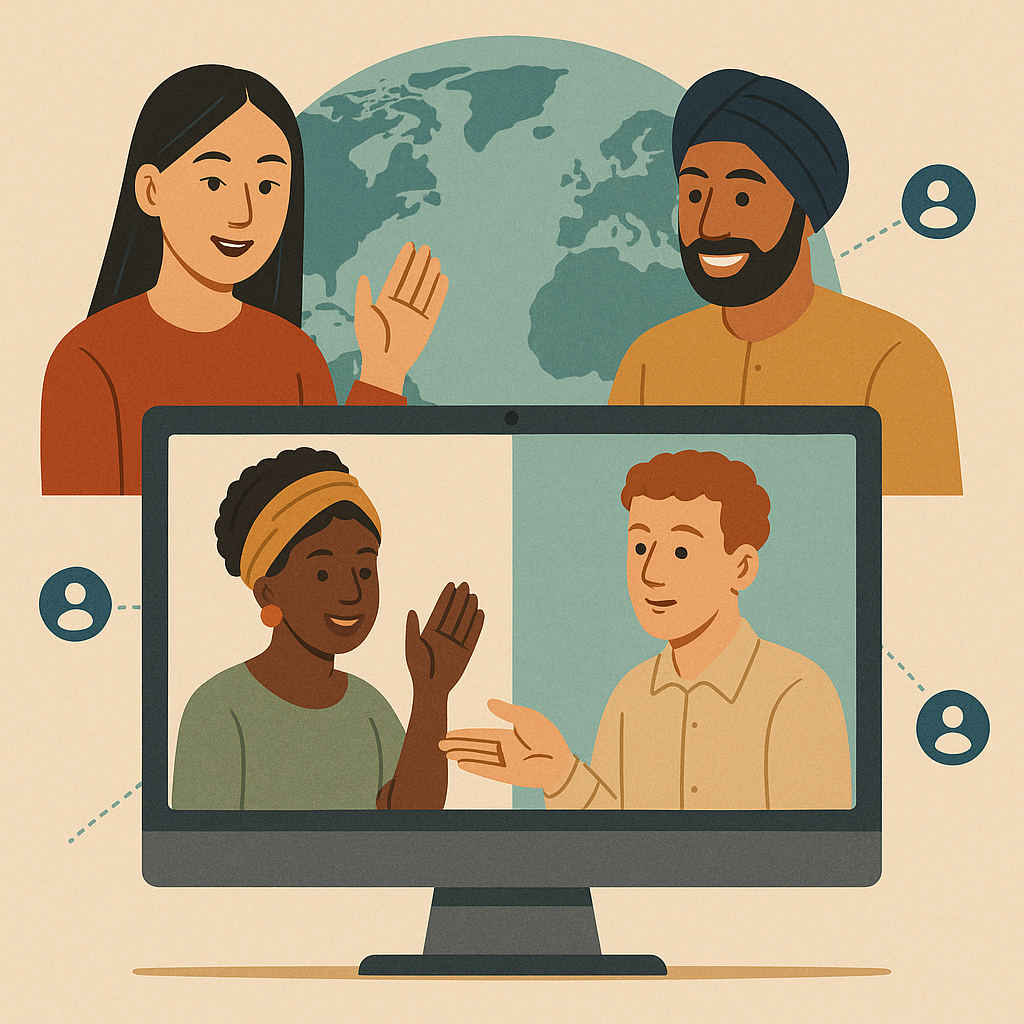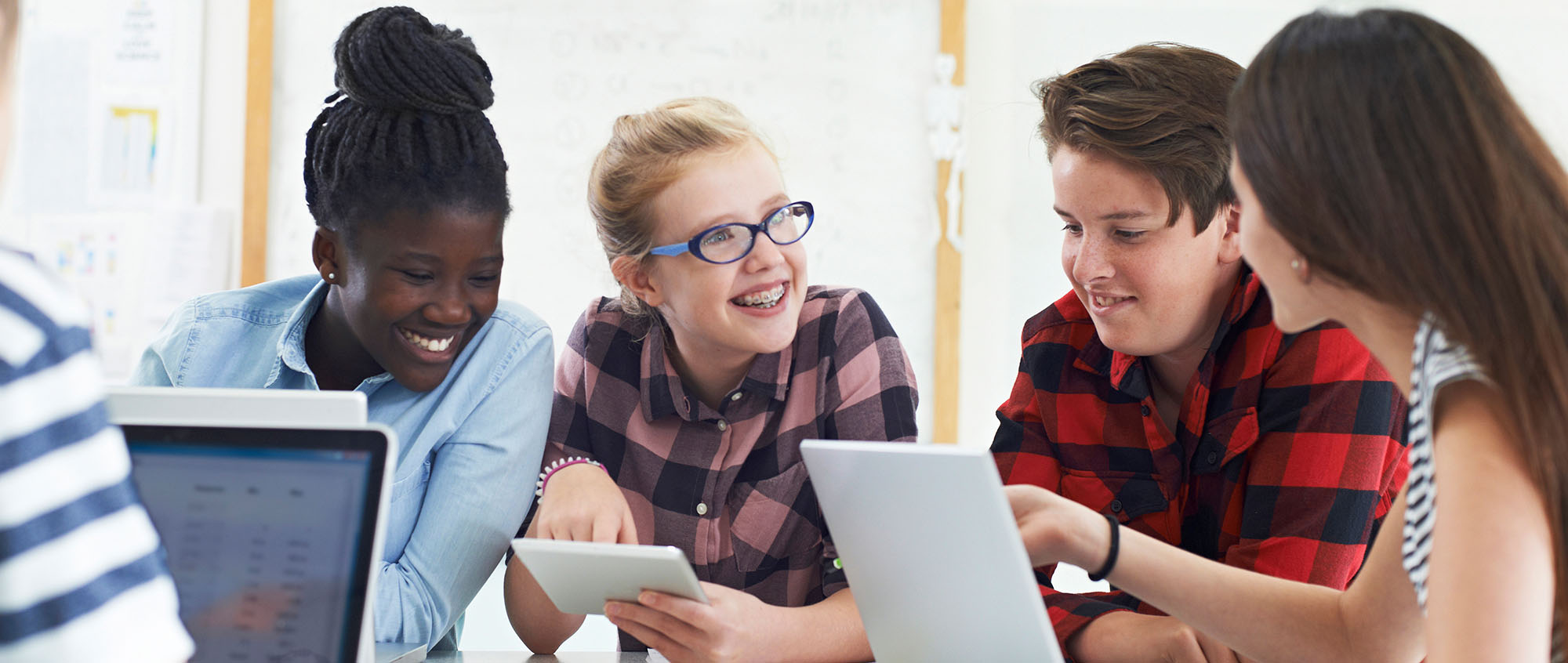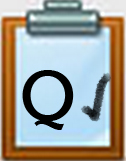Q4. Global Interaction: Introduction
Introduction
You’ve already learned a bunch of cool skills that real-world global collaborators use—like how to talk clearly, respect cultural differences, and look confident on camera.
Now it’s time to put those skills into action! In this Quest, you’ll join a live video chat or virtual meetup to connect with others and explore a real global issue. You’ll see the difference between sending a video (asynchronous) and talking in real-time (synchronous). Get ready—your teacher will fill you in on who you’re meeting, what you’ll be doing, and why it’s such an important experience. Let’s connect with the world and make it count!
learning objectives
I can:
- Use synchronous communication to connect to a classroom, colleague/peer, career, or expert.
- Use appropriate behavior in a virtual learning experience.
- Communicate cultural sensitivity in a virtual environment, including respect and empathy.
- Reflect on my growth as a global collaborator.

Competencies & Standards
MITECS Michigan Integrated Technology Competencies for Students, and
6. Creative Communicator
d. Students publish or present content that customizes the message and medium for their intended audiences.
7. Global Collaborator
a. Students use digital tools to connect with learners from a variety of backgrounds and cultures, engaging with them in ways that broaden mutual understanding and learning.
b Students use collaborative technologies to work with others, including peers, experts, or community members, to examine issues and problems from multiple viewpoints.
d Students explore local and global issues and use collaborative technologies to work with others to investigate solutions.
Websites and Documents
Websites
Videos from Outside Sources
- 5 Do's and Don'ts of Webcam Etiquette YouTube
- Video Conferencing Etiquette: The Do's and Don'ts YouTube
- Video Conferencing Guidelines and Etiquette for Student YouTube
21t4s Documents & Quizzes




